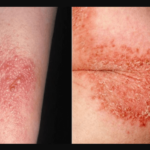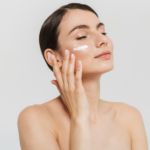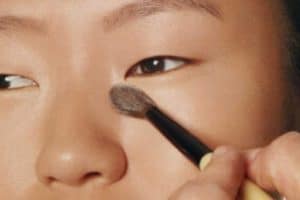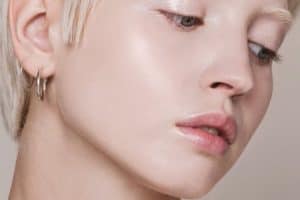There is a sort of sensual earthiness that radiates in people with olive skin tone. They have a somewhat mystical and timeless quality in their complexion. What is olive skin tone?
Olive skin tone refers to light or moderate brown or tan skin with undertones of green, golden, or yellow. It is a common skin tone of people from the Mediterranean, Latin America, and parts of Asia.
Most people think that they can achieve this skin tone by simply bathing in the sun. The truth is that getting a nice golden bronze tan is not the same as having a real olive complexion.
One does not merely get olive skin–they have to be born with it. It is a natural skin color, which is shared by different ethnicities around the world.
Also, olive is not merely a lighter shade of brown as commonly observed but is, in fact, as green as the fruit that it was named after. Though it is very subtle, this type of skin contains undertones of the green pigment, which appears to us as a light brownish tint.
Read on to learn more about olive skin tones, including what ethnicities have it, advantages and disadvantages of olive skin tone, and skincare tips.
Also, for an excellent firming day cream for your olive skin, take a look at our top pick, the ELEMIS Pro-Definition Day Cream:
Click here to see it on Amazon.
Olive Skin Tone: What Is It and Which Ethnicities Have It?
The Fitzpatrick Scale
The Fitzpatrick Scale is a numerical catalog for skin color ranging from the lightest complexion (type I, very fair) to the darkest (type VI, dark to darkest brown or black).
As a neutral color, olive would fall in the middle. But olive-toned skin itself comes in three different shades, which belong to types III to V of the scale.
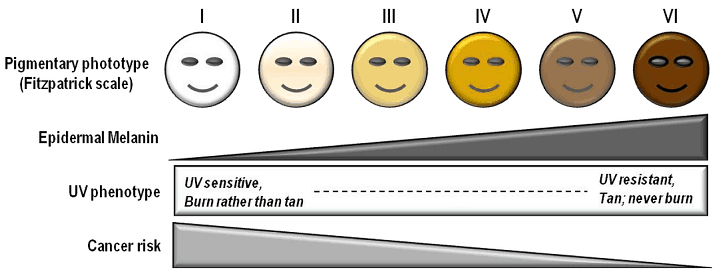
Here’s a more detailed description of each type and which part of the world they commonly occur.
Type III Pigmentation
This skin type ranges in tone from cream to a darker shade of olive. This type of skin sometimes burns mildly but always tans, albeit gradually. Type III skin frequently occurs in parts of Asia, Latin America, and the Mediterranean.
Type IV Pigmentation
Ranging from a brownish or olive skin tone to a moderately brown one, Type IV skin rarely burns and easily tans. This skin tone is typical among people from the Mediterranean but is also frequent in Asia and Latin America.
Type V Pigmentation
Type V skin tone ranges from olive to tan, burns very rarely, and tans rather easily. Ethnicities that have the olive skin tone of this type are frequent in the Middle East, Latin America, and the Indian subcontinent, including parts of Africa and the Mediterranean.
Ethnicities with Olive Skin Tone
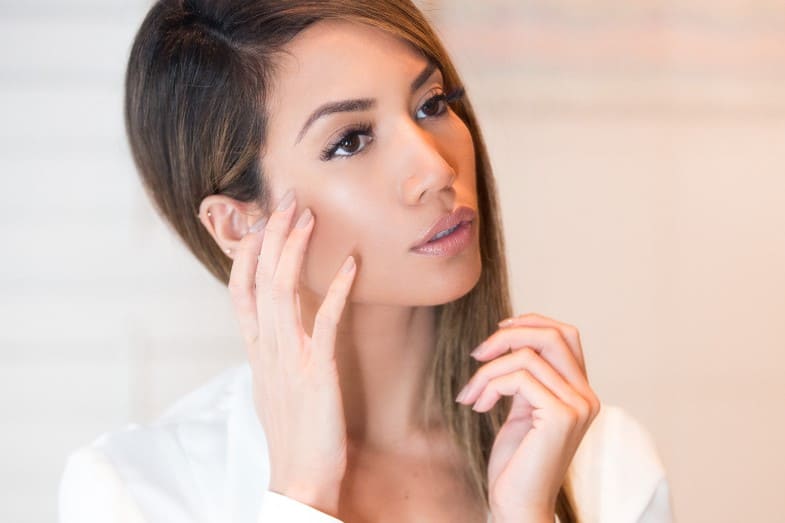
While white skin is chiefly associated with Europeans and black skin with Africans, olive skin is distributed among different races of people from practically every continent. The ethnicities that have olive skin tone are the following:
1. Mediterranean
The Mediterranean race is a Caucasian sub-race predominantly found in the lands of the Mediterranean Basin, which covers portions of the continents of Europe, Asia, and Africa.
To be precise, Mediterranean people commonly hail from Southern European countries such as Italy, Greece, Spain, Portugal, southern France, and East Thrace or the European section of Turkey.
Other countries include parts of Southern, Central, and Middle Eastern Asia, as well as North Africa and parts of the Horn of Africa.
Aside from having cream to tan, brown, or olive skin tone, Mediterraneans are characterized by their short to medium height, slightly aquiline nose, along with dark eyes and hair.
2. Malay
More properly known as Austronesian peoples, the Malay race refers not only to ethnic Malaysians but also to the people of Southeast Asian countries of Indonesia and the Philippines.
Classified as a brown race, Malays are noted for their tawny skin color, ranging from olive to clear mahogany to dark chestnut brown. They are also known for their thick, soft, curly black hair, slightly swelling forehead, full nose, and a large mouth with a prominent upper jaw.
3. Middle Eastern
People from the Middle East actually come in a diverse range of skin colors, which is from white to dark. However, most Middle Easterners are typically known to have brown skin, with an olive skin tone being on the lighter end of the color spectrum.
Olive-toned skin is especially apparent among people from Iran, Lebanon, and Algeria. Other Middle Eastern countries with ethnicities that have olive skin tone include Egypt, Turkey, and Afghanistan.
Those from the countries of the Arabian Peninsula, such as Saudi Arabia, Kuwait, Yemen, Oman, Qatar, and the United Arab Emirates, usually have darker skin, but olive skin can also occur.
4. Indian
The Indian subcontinent or Greater India is comprised of the countries of Bangladesh, Bhutan, India, Maldives, Nepal, Pakistan, and Sri Lanka.
Indian skin tone tends to vary according to caste, with members of the upper castes typically having whiter skin while those from the lower castes are much darker. Olive skin would occur somewhere among the middle castes.
Notable exceptions are hybrid Indians whose lighter skin is the product of being born from interracial relations.
5. Native and Latin Americans
Commonly known as American Indians, Native Americans are the indigenous people of the United States, predominantly populating the Western US, with small communities in the East.
In Latin America, Amerindians are an indigenous ethnic group found mostly in Bolivia and Peru, as well as Guatemala, where they are a large ethnic minority.
Native Americans, in particular, were once referred to as “redskins”, a term that has ever been considered offensive and quite inaccurate. In actuality, the skin color of Indigenous Americans may be more accurately described as brown, tawny, and of course, olive.
The below video by author Jen Thoden goes into more detail on olive skin tones, as well as how to determine what your own skin tone is.
Advantages of Having an Olive Skin Tone
One of the advantages of having an olive skin tone is that it is not as sensitive to the sun as fairer types of complexion.
The reason is that olive skin contains more melanin, which not only gives it its color but also absorbs solar radiation, giving the skin natural protection from the harmful ultraviolet rays of the sun.
Moreover, olive-skinned people tan more easily than those with lighter skin. Olive skin also tends to be oily, which protects it from the harsh elements of the environment. Olive-toned skin tends to have a slower skin aging process, giving it a smooth, glowing, and youthful appearance.
Disadvantages of Having an Olive Skin Tone
Olive skin also has its share of disadvantages. The overproduction of oil (particularly during adolescent hormonal changes) can clog up pores, leading to the appearance of pimples and blackheads.
Also, while melanin generally offers protection from the sun, it does not leave the skin altogether immune from damage caused by prolonged sun exposure.
At the slightest irritation, the skin tends to produce more melanin, putting it at risk from blemishes and discoloration.
Since olive skin usually has a thicker dermis (the inner layer of cells) and subcutis (the fatty layer underneath the dermis), these layers could give the appearance of jowls among older people.
For more on olive-toned skin, see this article here.
Skin Care Tips for Olive Skin
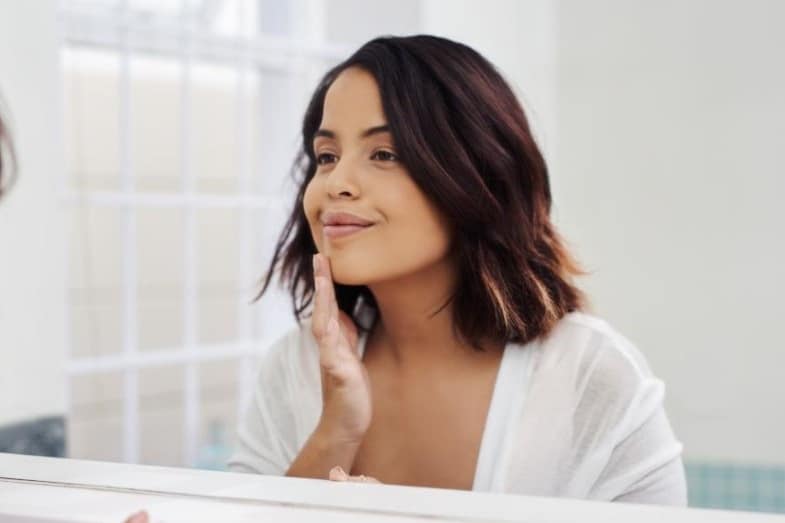
If you happen to belong to one of the ethnicities that have olive skin tone, it is essential to take care of your complexion to keep enjoying its benefits and overcome its drawbacks. The following tips can help you maintain the health and beauty of your skin:
1. Skin Cleansing
Cleanse your skin two times a day–once in the morning and then at night. Remove the excess oil from your skin without drying it out, and use a cleanser containing salicylic acid to eliminate dead skin and keep your pores clear.
Apply toner on your T-zone (the part of the face comprised of the forehead, nose, chin, and the area around the mouth) to reduce the appearance of acne and shine.
2. Apply Moisturizer
After cleansing in the morning, apply a light, oil-free broad-spectrum SPF moisturizer to reduce skin dryness. At night, use a moisturizer containing niacinamide and retinol to speed up skin surface cell turnover while you’re asleep and preserve the youthful glow of your skin.
3. Get Rid of Unwanted Facial Hair
Use a mild depilatory cream to get rid of unwanted facial hair. Apply it after your skin cleansing routine or once the dead skin cells have been exfoliated.
Be careful, though, as depilatories contain strong chemicals. However, the safer brands usually come with a set of instructions, as well as a soothing balm. Always read the packaging and follow the steps carefully.
Recommended Skin Care Products
When cleansing your skin, you should make sure that you’re using the best tools for the job. We recommend these three highly-rated skincare products to help maximize your daily skincare routine.
1. ELEMIS Pro-Collagen Definition Night Cream
Also known by its original name, the ELEMIS Pro-Collagen Definition Night Cream is a potent blend of natural ingredients, such as collagen-producing Gardenia stem cells, arjuna, white lupin, and other plant extracts.
Click here to see it on Amazon.
These ingredients are formulated to refine facial contours and reduce the appearance of sagging cheeks, jowls, and chin. It also improves skin texture, giving it a soft, smooth, and silky feel. This product is perfect for every type of complexion, including olive skin tones.
Use this product every evening after skin cleansing. Simply warm a pea-sized amount of the cream between your palms and apply it over your face. Be careful to avoid direct contact with your eyes.
For best results, use it with Elemis Pro-Collagen Definition Eye & Lip Contour Cream and Pro-Collagen Definition Day Cream.
2. PMD Personal Microderm Pro – At-Home Microdermabrasion Machine
The PMD Personal Microderm Tool is a state-of-the-art customizable microdermabrasion device for home use, specially designed to smoothen and even out skin tone, increase skin hydration, reduce pore size, and diminish signs of aging and other skin imperfections.
Click here to see it on Amazon.
It is perfect for anyone with olive skin tone, especially those with oily skin.
With eight levels of exfoliating discs and two speeds of variable intensity, it uses patented spinning disc technology to remove the surface layer of dead skin cells, enabling skin care products to penetrate 20 times deeper.
It also utilizes vacuum suction to increase blood flow to boost collagen and elastin in the skin.
Before using the PMD kit, thoroughly cleanse and dry your skin first. Then, start with the white ultra-sensitive disc, practicing on your arm or leg before using it on your face.
Pull your skin tight to help the device glide smoothly over it, one pass per area. Swiftly move the device across your skin in an upward motion. Avoid contact with your eyes, and do not hover on any spots.
After the treatment, apply toner and moisturizer to your skin. Avoid using active or peeling skin products, such as retinol or AHAs, 48 hours before or after PMD use.
Wait for 6 to 7 days between treatments and replace the disc after 3 to 4 treatments. After about 10 weeks of consistent use, you will notice a significant decrease in fine lines and wrinkles. It will also improve your skin tone and texture, along with reducing dark spots and blemishes.
To learn more about olive skin tone, see the article on howchimp.com: Olive Skin Tone – What Is It?
Makeup Tips for Olive Skin
1. Avoid Oil-based Makeup
Another vital part of skin care, especially when it comes to your face, is the type of makeup you put on it.
Avoid oil-based makeup as olive skin tends to be oily. Adding more would irritate it and cause acne to appear. Powder-based makeup is preferable as it absorbs excess oil and reduces shine.
2. Concealer is Optional
Another advantage of olive-toned skin is that there’s no need to put on concealer because of its natural glow. Instead, you can just use a foundation as your makeup’s base.
Warm hues such as bronze, brown, deep green, maroon, and plum compliment olive skin well, while cool tones like white highlight the richness of your complexion.
3. Blushes That Complement with Neutral Skin Tone
For blushes, a pink and peach-colored bluish shade works well with your neutral skin tone, while bronze gives your face a slightly edgy look.
For eyeshadow, bronze and gold are the usual go-to colors, but you may opt for darker, more eye-catching colors like dark blue, emerald green, or purple.
As for lipstick, most colors are compatible with an olive-skinned person’s lips but avoid nude shades, which would only look dull on a neutral base.
Ageless and enduring, olive is the color of a myriad of cultures. And like any cultural heritage, it deserves to be nurtured and preserved. Beauty may be skin deep, but it is as wide and diverse as the world itself.
Conclusion – Olive Skin Tones
What is olive skin tone? Olive skin tone refers to moderate or light brown, or tan skin. Olive skin also has undertones of yellow, green, or golden. It is a common skin tone of people from the Mediterranean, Latin America, and parts of Asia.
If you are wanting to achieve an olive skin tone, you cannot just bathe in the sun. Those with olive skin are born with it.
If you have olive skin tone or an olive complexion, you’re lucky that your skin isn’t as sensitive to the sun, and it tans nicely. You still need to apply sunscreen to it to avoid skin damage. Those with olive skin tend to produce more oil, so it is important to exfoliate to avoid clogged pores.






![Derma Roller Microneedle Kit [DERMAROLL LITE 0.25mm by Prosper Beauty]](https://m.media-amazon.com/images/I/41HdRe4-K3L._SL500_.jpg)


![Golden Brown Skin Tone - What Is It? [With Pictures] golden brown skin](https://skincaregeeks.com/wp-content/uploads/2021/04/golden-brown-skin-150x150.jpg)
![Neutral Skin Tone Defined [and Best Colors for Neutral Skin] neutral skin tone](https://skincaregeeks.com/wp-content/uploads/2021/05/neutral-skin-tone-150x150.png)
